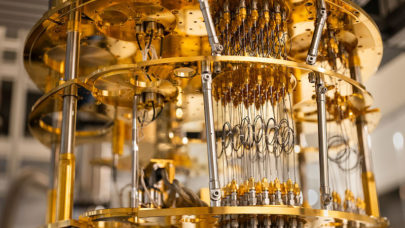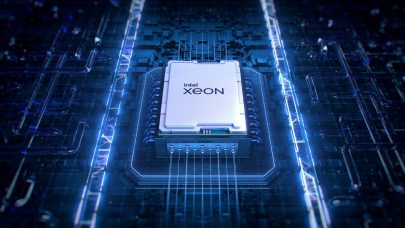Just over a week ago, the International Advanced Research Workshop on High Performance Computing, Grids and Clouds took place in Cetraro, Italy, in the beautiful setting of Hotel San Michele, high up on the cliffs of the Calabria coast. The aim of the workshop was to discuss future developments in HPC technologies and to assess the main aspects of grids and clouds, with special emphasis on solutions to grid and cloud computing deployment.
The biannual event started as a NATO-sponsored workshop in 1992 and is now in its tenth incarnation, successfully organized by Professor Lucio Grandinetti and his team from the University of Calabria in Rende. The workshop attracted 110 experts in high performance computing, grids and clouds, and the list of participants reads like the who-is-who in these fields: among many others, Marian Bubak, Charlie Catlett, Ian Foster, Guang Gao, Chris Jesshope, Peter Kacsuk, Carl Kesselman, Thomas Lippert, Miron Livny, Ignacio Llorente, Satoshi Matsuoka, Tim Mattson, Paul Messina, Ken Miura, Satoshi Sekiguchi, and many other international leaders from academia, government, and industry. To give an overview of what appear to be some of the most pertinent issues in the space now, I will briefly describe those presentations which focused on cloud computing, showing what the community is talking about at events like this one.
 When the workshop started, heavy clouds began to cover the blue sky of Calabria. The first Cloud came from Ian Foster when in his keynote he talked about how cloud services can make us smarter. “The outsourcing of computing via approaches such as utility computing, on-demand computing, grid computing, software as a service, and cloud computing can enhance human capabilities, by freeing computer applications from the limiting confines of a single computer”. Software that thus runs “outside the box” can be more powerful, dynamic, and collaborative. It can also be cheaper, due to economies of scale in hardware and software. Simultaneously, service-oriented architectures make it easier to integrate data and software from many sources. The combination of new functionality and new economics inspires new applications, reduces barriers to entry for application providers, and in general disrupts the computing ecosystem.
When the workshop started, heavy clouds began to cover the blue sky of Calabria. The first Cloud came from Ian Foster when in his keynote he talked about how cloud services can make us smarter. “The outsourcing of computing via approaches such as utility computing, on-demand computing, grid computing, software as a service, and cloud computing can enhance human capabilities, by freeing computer applications from the limiting confines of a single computer”. Software that thus runs “outside the box” can be more powerful, dynamic, and collaborative. It can also be cheaper, due to economies of scale in hardware and software. Simultaneously, service-oriented architectures make it easier to integrate data and software from many sources. The combination of new functionality and new economics inspires new applications, reduces barriers to entry for application providers, and in general disrupts the computing ecosystem.
Then, more clouds accumulated. Jose Fortes presented cross-cloud computing which enables complex IT systems and applications with components as services from different clouds. One of the engineering challenges of combined clouds is communication across clouds. Jose explained how to engineer a combined cloud for providing BLAST-computing as a service using a lightweight overlay networking approach, Nimbus middleware for deployment of virtual BLAST appliances and Hadoop for fault-tolerant parallel execution of multiple BLAST jobs. This system has been deployed across clouds at three FutureGrid sites in the US and two Grid5000 sites in Europe, demonstrating feasibility, scalability and manageability of sky-computing middleware. Jose also put forward the idea of virtual clouds, i.e., providers of computing services overlaid on more than one cloud. A virtual cloud spans across multiple cloud providers with the view of a single logical cloud. Virtual clouds enable high-level computing services to be provided by third-parties who do not own physical resources.
Ignacio Llorente described the innovations in cloud management brought by the OpenNebula Cloud Toolkit. This widely used open-source cloud manager fits into existing data centers to build private, public and hybrid Infrastructure-as-a-Service (IaaS) clouds. Most of its innovative features have been developed to address requirements from business use cases in RESERVOIR, flagship of European research initiatives in virtualized infrastructures and cloud computing. The innovations comprise support for elastic multi-tier services; flexible and scalable back-end for virtualization, storage and networking management; and support for cloud federation and interoperability. Finally, Ignacio introduced the community and ecosystem that are evolving around OpenNebula and the new European projects on cloud computing infrastructures that are using this innovative cloud technology.
Marcel Kunze presented the OpenCirrus Project, a collaboration of industrial and academic organizations: HP, Intel, Yahoo!, CMU, ETRI, IDA Singapore, KIT, MIMOS, RAS and UIUC. OpenCirrus is an open cloud-computing research testbed designed to support research into the design, provisioning, and management of services at a global, multi-datacenter scale. The open nature of the testbed aims to encourage research into all aspects of service and datacenter management. In addition, the hope is to foster a collaborative community around the testbed, providing ways to share tools, lessons and best practices, and ways to benchmark and compare alternative approaches to service management at datacenter scale. The specific research interests of KIT are in the field of HPC as a Service (HPCaaS) and Big Data as a Service (BDaaS).
Matt Wood described how to orchestrate the cloud for High Performance Elastic Computing. As scale increases so network, disk I/O, CPU performance and utilization all become larger and larger barriers to actually getting work done. Matt introduced the use of elastic, scalable cloud approaches as a set of productivity tools for constrained, highly flexible domains. He explored how cloud computing can play a central part in the orchestration, management and monitoring of scalable computation at petascale. The topics he covered were, among others, the productivity tax of web scale applications; hard constraints of big data: maintaining availability at scale; architectures and models for high throughput systems; addressing data as a programmable resource; orchestrating cloud architectures; managing data sets and workflows; and Map/reduce for elastic infrastructures.
Manoj Devare reported on a prototype implementation of desktop clouds which provides the virtual infrastructure manager and scheduling framework to leverage the idle resource(s) of a network of PCs. VirtualBox hypervisor is used as the best suited virtualization technology for this work. He discussed the architecture and the scheduling approach to launch a computation abstracted as a virtual machine or a virtual cluster. The scheduling framework balances both the requirements of resource providers (PC owners), and of the users of the cloud system who expect the best performance.
Finally, Mathias Dalheimer stated that “for many enterprises cloud computing for HPC is a viable option.” When considering this, enterprises must be very careful: not every application can run in the cloud effectively. Another problem is the seamless integration of external resources in the internal infrastructure of the enterprise. His talk demonstrated an approach to combine internal and external resources while optimizing runtime performance using auto-parallelization during job execution.
In addition, over 40 invited presentations dealt with non-cloud topics such as petaflops and exaflops computing; emerging computer architectures and their performance; green computing; languages, compilers, tool and programming models for parallel and multi-core systems; distributed systems and algorithms; hybrid CPU + GPU computing; innovative applications in science and industry; and scheduling, service level agreements, policy management, security, reliability, accountability, and the resolution of barriers, in grid and cloud computing.
This workshop again demonstrated its constant high quality of expert contributions, plenty of time for communication during the extensive lunch and dinner breaks, its perfect organization, and its breathtaking settings in one of the most beautiful places you can imagine, overshadowed only by a few clouds. Presentation slides of the HPC Workshop are available on the conference website http://www.hpcc.unical.it/hpc2010/prsnts.htm.
Wolfgang Gentzsch is Advisor to the EU project Distributed European Infrastructure for Supercomputing Applications (DEISA), a member of the Board of Directors of the Open Grid Forum, and a contributing editor to HPC in the Cloud.


























































